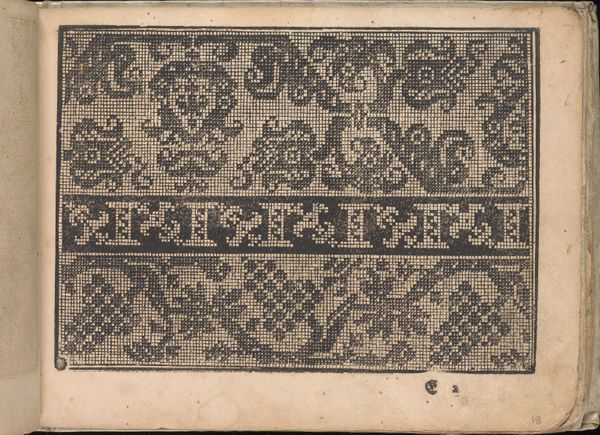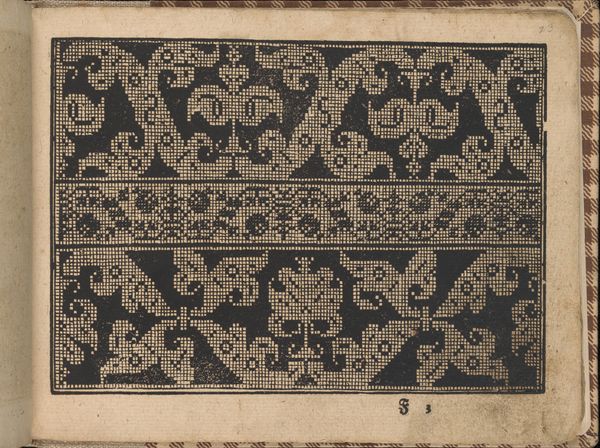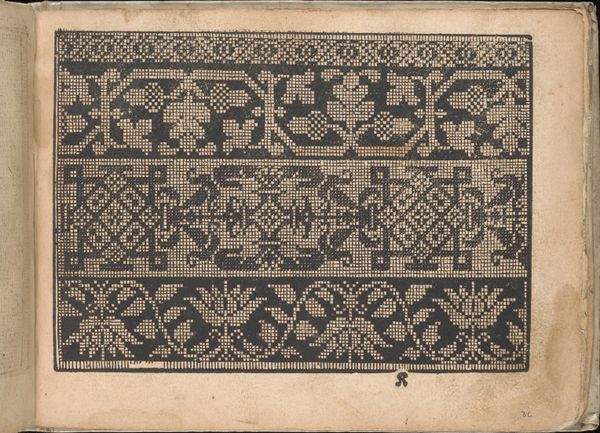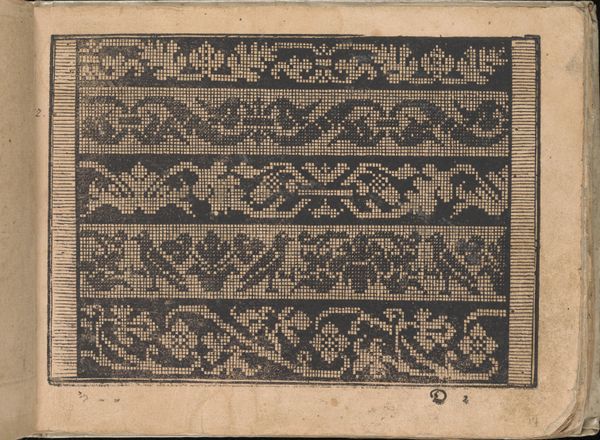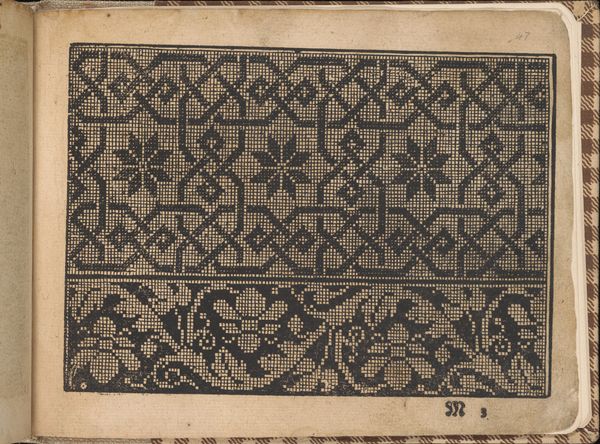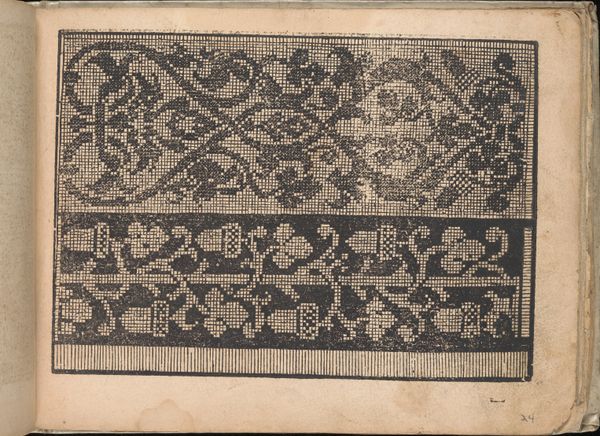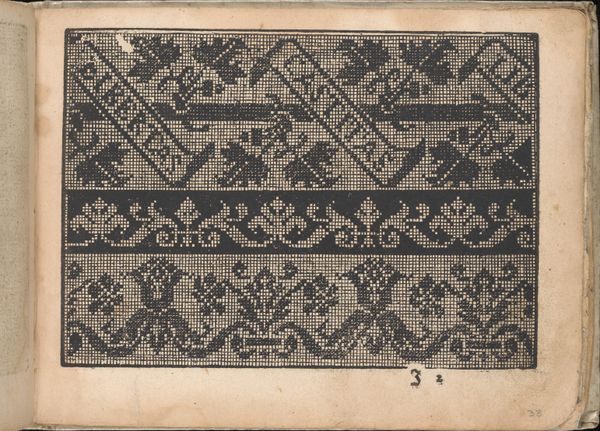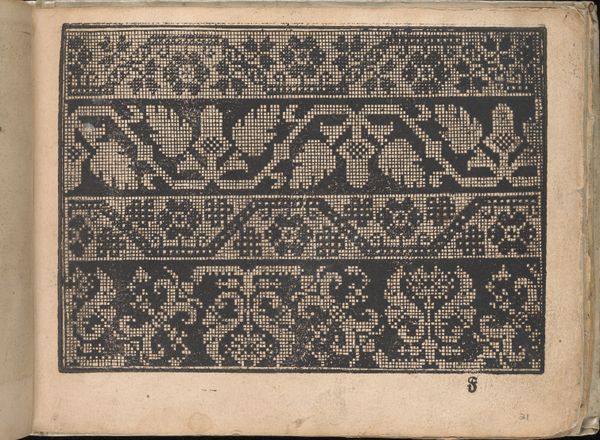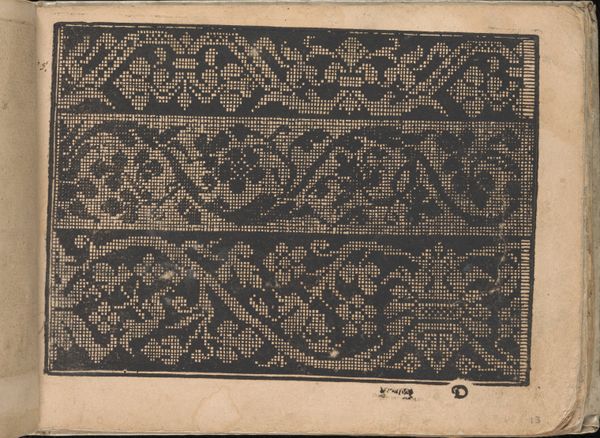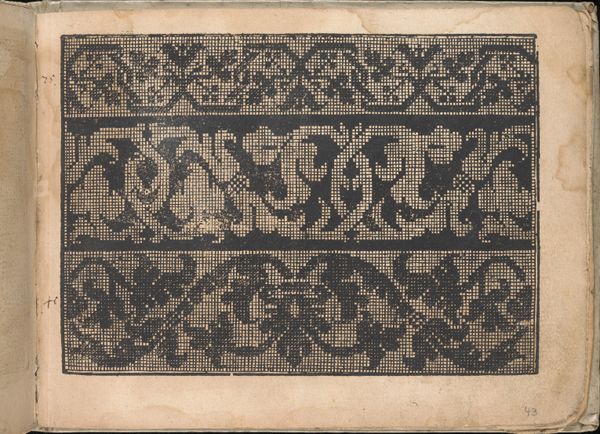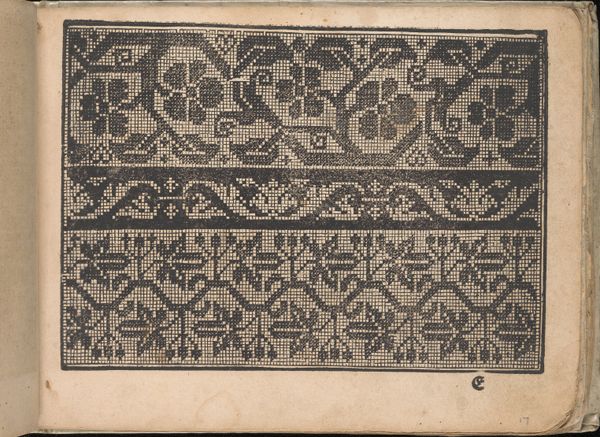
drawing, print, paper, ink, woodcut
#
drawing
#
medieval
#
ink paper printed
# print
#
book
#
paper
#
ink
#
linocut print
#
woodcut
#
decorative-art
Dimensions: Overall: 6 5/16 x 8 1/4 in. (16 x 21 cm)
Copyright: Public Domain
Bernhard Jobin created this woodcut, titled "New Künstlichs Modelbuch (Page 24 recto)," in the 16th century. It provides patterns for embroidery and other needlework. Printed pattern books like this emerged in 16th-century Europe to meet the growing demand for luxury goods and fashionable clothing. In a world where social status was visually communicated through dress, printed patterns democratized access to the latest styles. Artisans and home embroiderers could imitate the intricate designs worn by the elite, and merchants could keep up with consumer demand. The printing press thus became a vehicle for disseminating not just information but also social aspirations. Art historians consult a wide range of sources—account books, inventories, and surviving textiles—to understand the social lives of images like these. By studying these artefacts, we can learn a great deal about the intersection of art, commerce, and social mobility in early modern Europe.
Comments
No comments
Be the first to comment and join the conversation on the ultimate creative platform.
